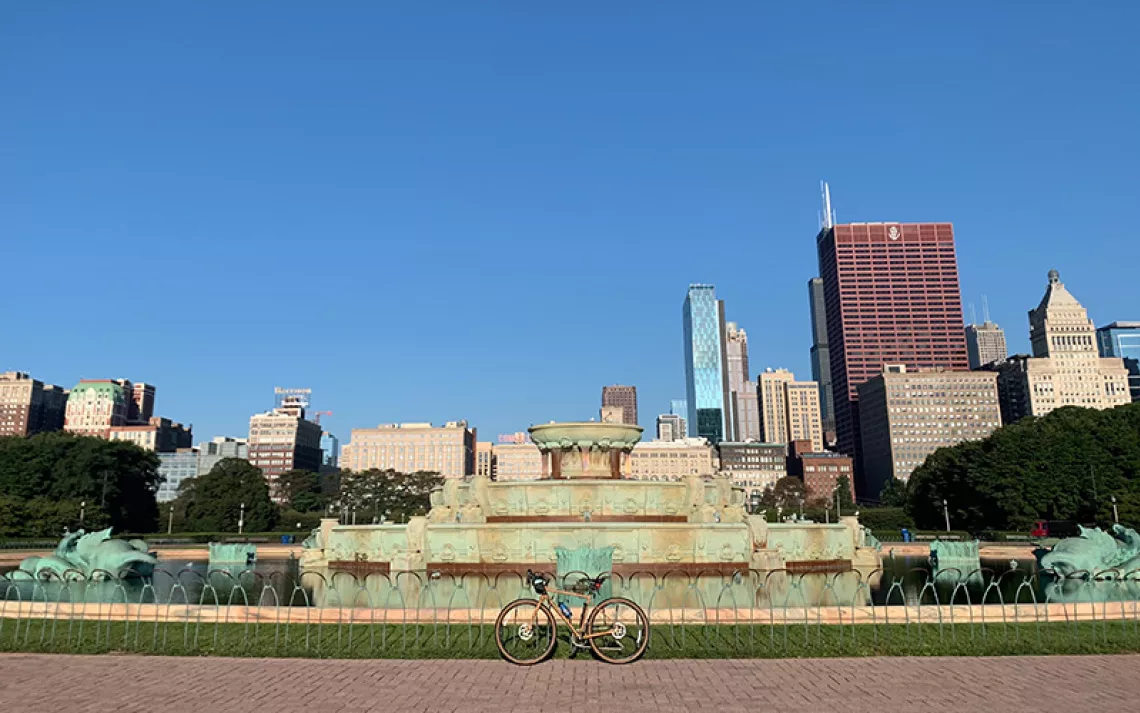What Can Dockless Bikes Tell Us About Cities?
Love them or hate them, they’re generating loads of newfound data
This past spring, clusters of brightly colored dockless shared bikes (DSBs) began to proliferate on San Diego's city sidewalks like tulips after a spring rain. They were put there by companies—such as Lime, Ofo, and Mobike—seeking to disrupt the status quo of California’s omnipresent car culture. As a result, thousands of DSBs ended up scattered around commercial districts and residential neighborhoods. Dozens of markets—from major metropolitan cities like Minneapolis and Dallas to college campuses like Arkansas State University—have similarly bike-strewn landscapes as a result of the DSB wave, which added 44,000 bikes to U.S. streets in 2017.
The companies behind DSBs are united in their eagerness to capitalize on the so-called sharing economy (which has exploded since the dawn of Uber and Airbnb) by changing the way people travel and commute. The premise of DSBs is simple: Why own a set of wheels when you can rent them? Instead of driving, busing, requesting a Lyft, or having to own and maintain a traditional docked bicycle, DSB customers simply download an app to their smartphone, locate a DSB (or even an electric scooter), and scan the QR code that’ll unlock the wheels to begin their carbon-free journey. When they're done, users can leave the untethered bikes or scooters wherever custom and the law allows.
 And these companies are blanketing cities and university towns. “The more bikes you have, the more people use them,” says Scott Kubly, director of government relations for the San Mateo, California–based Lime (formerly LimeBike), which launched in June 2017. Lime and its brethren aim to disrupt existing transportation systems by making the dockless bikes readily available, and affordable to most city-dwellers.
And these companies are blanketing cities and university towns. “The more bikes you have, the more people use them,” says Scott Kubly, director of government relations for the San Mateo, California–based Lime (formerly LimeBike), which launched in June 2017. Lime and its brethren aim to disrupt existing transportation systems by making the dockless bikes readily available, and affordable to most city-dwellers.
As a carless San Diegan and avid A-to-B cyclist, I can attest that having DSBs within walking distance of bus routes and the trolley eases the burden of taking public transportation in San Diego. And in theory, having an abundance of DSBs dotted about the city makes commuting without a car feasible, if not always practical. On average, DSB users pay $1 per hour, which is ample time to cover several miles over mixed terrain.
In San Diego, however, as in many cities, DSBs’ sudden appearance on city sidewalks has led to pushback from unhappy residents. Dockless bikes have been haphazardly parked and clumped in odd spots around the city (including crosswalks and private yards), leading to nuisance complaints. In retaliation, vandals have destroyed DSBs or stranded them in inconvenient places, such as bodies of water. In the Coronado and Little Italy neighborhoods, two popular San Diego tourist destinations, city officials have outright banned DSBs, citing safety concerns. In the nearby resort city of Coronado, officials have begun impounding DSBs and fining the companies for uncollected bikes.
Bike advocates, on the other hand, argue that DSBs are a boon for commuters. More cyclists on the road, they contend, means less traffic congestion, which mitigates the pernicious effects of ground-level pollution and the health problems associated with exposure to tailpipe emissions.
Yet for all the well-documented controversy surrounding DSBs, one overlooked aspect is the rivers of data their systems generate. Since each bike is equipped with sensors, and each cyclist carries a GPS-enabled smartphone, any given fleet of DSBs is collecting multiple terabytes of user information.
According to Eric Smith, a spokesperson for Ofo, the aggregate data collected from DSBs can provide newfound opportunities to reduce the number of cars on the road, “by solving the riddle of the last mile, and by filling the unmet needs of riders.”
There’s no denying that as more devices are being created with wi-fi capabilities and built-in sensors, the Internet of Things makes it increasingly possible to forecast users’ haunts and habits—revealing patterns and market trends at a pace and scale that humans can’t match. It’s how Amazon optimizes its platform to anticipate the needs of online shoppers, and how Airbnb calculates the price of vacation rentals.
Could it be how DSB companies help to wean people off cars, which are still viewed as the first and foremost mode of transportation for so many? It’s hard to say, because as of now, that vast reservoir of data that DSBs can accumulate remains largely untapped.
However, early municipal adopters of DSB systems do have inklings about what that information can reveal. For example, through a citywide survey, Seattle’s Department of Transportation concluded 75 percent of DSB rentals were for transit purposes, which peaked around 4 P.M., during the afternoon rush hour. Perhaps more surprisingly, the survey showed that roughly two-thirds of Seattle’s inhabitants have used DSBs within the past year, with ridership equally divided between the city’s white and minority populations, and between neighborhoods as diverse as the tony University District and Georgetown, which is much more industrial.
Mark West, a city council member in Imperial Beach, California, insists that DSBs aren’t just for hipsters and tourists. In 2017, the blue-collar beach town, which is wedged against the U.S.-Mexico border, became the first city in San Diego County to adopt dockless bikes.
“You see middle-school and high-school students ride them all the time,” says West, who notes that dockless bikes have wildly exceeded his expectations. “This is a transportation medium that a lot of people are really using, and that a lot of people really like.”
Indeed, in an ideal world, DSB companies, by getting users where they need to go in a cheap and timely fashion, could do much to mitigate one of the foremost contributors to climate change. “The biggest competitors we have are cars, and not other bike-share companies,” says Smith of Ofo. “We’re all trying to get more cars off the road.”
 The Magazine of The Sierra Club
The Magazine of The Sierra Club




